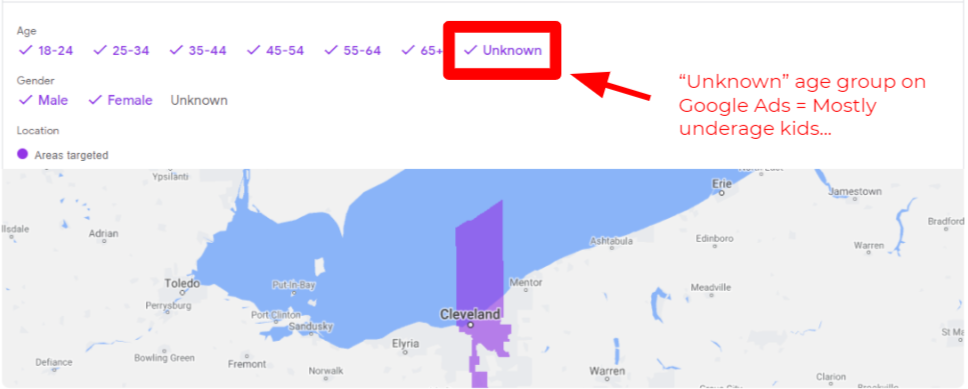When we’re running digital campaigns, the most common concern our clients share with us is “How do we know our money is being well spent?”
We sympathize with our clients on this question. Digital marketing is complicated, and it can be difficult for non-digital folks to understand. The reports that campaigns receive are often indecipherable spreadsheets featuring terms that campaigns aren’t familiar with like CPM (Cost Per Thousand Impressions), and CTR (Click Through Rate). Campaigns end up judging the entire digital ads campaign on two things:
1) Do our ads look good?
2) Did we hear from folks on the ground that they are seeing our ads?
Although both of these questions are important, answering them falls well short of determining the effectiveness of a digital campaign. To complicate matters even further, there are quite a few providers in the Poli-Digi space who take advantage of their clients’ lack of digital expertise and the opaqueness of the digital ad buying process to jack up prices on inventory and get away with shoddy campaign execution. It’s a difficult problem to solve.

“Did folks say they saw our digital ads?” is not the best Key Performance Indicator, but often the one campaigns feel they have to default to.
Fortunately, Facebook and Google have developed sophisticated ads libraries that catalog all political ads placed on their platforms.
Political campaigns of any size can now see tons of stats on their digital programs broken down on a campaign to campaign and ad to ad basis. This transparency can help your campaign vet your digital provider’s chops to ensure that they are not only executing the campaign that you envisioned, but also to help you double check your provider’s targeting and creative skills.
Here are three quick checks you can do on your digital provider using these Ads Libraries.
IS MY PROVIDER SPENDING MY FULL BUDGET?
Unfortunately, there are still many providers in the Poli-Digi space who take advantage of their client’s lack of digital sophistication to reap extra profits through inventory mark ups. They’ll say they’re buying $5,000 of Facebook ads, then place $3,000 and put the extra $2,000 in their pocket. Although Facebook and Google’s ads libraries are not perfect, they are pretty accurate in reporting total campaign spend, both on a week-to-week and lifetime basis. You can review them to make sure your budget is being fully deployed, on a pace that best fits your campaign’s path to victory.
IS MY PROVIDER TARGETING MY AUDIENCE CORRECTLY?
Both ads libraries share some, but not all, details on how advertisers are utilizing the platform’s targeting capabilities to drill down on your target audience. You can see basic demographic information like age, location, and potential audience size of each campaign being run. Using this data, you can surmise quite a bit. For example, on Facebook, if your provider is running a “List” targeting campaign (also known as 1:1 targeting, data targeting, and voter file targeting), you should expect to see at least 80% or more of your ad buy to occur in the geographic location of your campaign. If you see lower than that, they are probably not using your data to target properly. On Google, double check that your Google Display and Youtube campaigns are excluding the age group “Unknown”. Google categorizes folks who are under 18 as the “Unknown” age group, which is a demo very few political campaigns should be interested in targeting. Given Google’s ban on using 1:1 data for political advertising, we also recommend the age group 18-24 be excluded on Google for voter persuasion and public affairs campaigns.

“Unknown” age group on Google Ads = Mostly underage kids…
Important note: These ad libraries do not always report demographic information accurately. The Google ads library especially has had numerous issues so far this year with their demographic reporting. If you see something that looks off in the ads libraries, don’t assume your provider has it set up wrong ‒ instead, use what you found to start a conversation with them about it and see what they say.
IS MY PROVIDER FORMATTING MY ADS FOR BEST PERFORMANCE ON EACH AD PLATFORM?
The format of your digital ads ‒ their length, how they are cut, how they communicate your message on mute ‒ have a huge impact on your campaign’s effectiveness on the different digital ad platforms. Tailoring your campaign’s content to the user experience of each platform not only more effectively communicates with your target audience on that platform, it also prompts the ad platforms to give you better deals on inventory and increased audience reach. You can use the Ads libraries to double check your provider is optimizing your creative appropriately for each platform.
On Facebook, the number one thing to check is if your provider is creating content optimized for mobile. 90% of Facebook and Instagram’s inventory (Facebook owns Instagram and both are bought through Facebook Ads) is served on mobile devices, so your ads should be cut 1:1 instead of 16:9. 9:16 is best for Instagram stories type inventory, although 1:1 will do the trick just fine. We have found that ads cut in the 1:1 format often cost up to 15% less than the same ad cut in the traditional 16:9 TV style. This is because Facebook knows you are helping them provide a better user experience to their customers with mobile optimized ads, and will reward you with discounts for scratching their back. Beware the provider who says “Your TV ad will work just fine” as a Social Media ad! Also note that 90% of Facebook inventory starts with the sound off, so double check that your provider is using subtitles and graphic elements that deliver your message on mute.
On Youtube, the 16:9 TV style ad format works great. However, you’re going to want a 15 second cut of that ad to get access to “Non-Skippable” Youtube inventory, which makes up a large swath of available Youtube ads. “Skippable” Youtube ads can be as long as you want, but note that most folks will skip the ad after the 5 seconds they are required to watch it, so make sure your message is well communicated in the first 5 seconds of your ad. TV ads that take 15 seconds to get going are not appropriate for Youtube Skippable content!
For more information on how Digital Ad Platforms reward you for formatting your ads to their platforms, watch this video featuring original Google economist Hal Varian’s explanation of “Quality Score” and the way the first Digital Ad Auctions were set up for Google Search Ads.
TRANSPARENCY IS GOOD.
Hopefully this overview of how to check Facebook and Google ads libraries provides you some insights and peace of mind with your digital provider’s deployment of your budget. Although Facebook and Google are far from perfect actors, their Political ads libraries help bring transparency to an opaque system. They should be applauded for this ‒ most of digital ad buying still happens on platforms that have yet to feel enough pressure to build Political ads libraries (See the COMPETE Digital Ad Landscape Graphic below ‒ The majority of platforms still do not have transparency Ads libraries). Hopefully the market continues to evolve towards more transparency. Here at COMPETE, we say let the revealing light shine in so that providers and campaigns can work together to execute the best digital campaigns possible. Our firm delivers aggressively detailed reporting, radically transparent fees, and consistent engagement with our clients to ensure the programs we run are doing exactly what they are supposed to. In the end, that’s what it’s all about ‒ having a team that you know is always going to produce the results you need.
Zach Mandelblatt
President
Zach@CompeteEverywhere.com
503-819-6778

